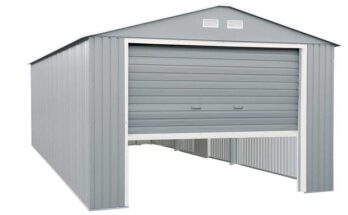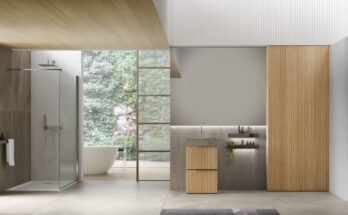Flat roofing has become a popular choice for both residential and commercial buildings, offering a modern aesthetic and practical advantages. This guide delves into the details of flat roofing, covering its history, types, installation process, advantages, disadvantages, and maintenance.
History of Flat Roofing
Ancient Beginnings
Flat roofs have been used since ancient times, particularly in arid regions where water drainage was less of an issue. The earliest known flat roofs were built in Mesopotamia and Egypt, where flat, mud-covered roofs were commonplace. These structures were simple, often composed of wooden beams covered with reeds and mud.
Modern Evolution
With advancements in technology and materials, flat roofing evolved significantly during the 20th century. The introduction of materials like asphalt, rubber, and synthetic membranes allowed for more durable and water-resistant flat roofing systems. Modern architecture, particularly in the mid-20th century, embraced flat roofs for their sleek, clean lines, contributing to their popularity in commercial and residential construction.
Types of Flat Roofing
There are several types of commercial roofing materials, each with unique installation processes, and benefits. The most common types include:
Built-Up Roofing (BUR)
Built-up roofing, also known as tar and gravel roofing, is one of the oldest flat roofing methods. It consists of multiple layers of bitumen (asphalt) alternated with reinforcing fabrics (such as fiberglass). The top layer is typically finished with gravel or a reflective coating to protect against UV rays.
Advantages:
- Durable and long-lasting
- Good at resisting water and weathering
- Provides excellent insulation
Disadvantages:
- Heavy, requiring a strong structural support
- Labor-intensive installation process
- Potential for strong odors during installation
Modified Bitumen
Modified bitumen roofing evolved from BUR, incorporating polymer-modified bitumen for enhanced flexibility and durability. It can be installed using various techniques, including hot asphalt, cold adhesive, and self-adhesive sheets. Click here to know more.
Advantages:
- Improved flexibility, even in cold temperatures
- Enhanced UV protection
- Easier to install than traditional BUR
Disadvantages:
- More expensive than BUR
- Still requires professional installation for best results
EPDM (Ethylene Propylene Diene Monomer)
EPDM is a synthetic rubber membrane known for its durability and flexibility. It is available in large sheets, making installation relatively straightforward. EPDM is popular in both residential and commercial applications due to its longevity and ease of repair.
Advantages:
- Highly durable and resistant to UV rays
- Easy to install and repair
- Cost-effective
Disadvantages:
- Black EPDM can absorb heat, leading to higher cooling costs
- Susceptible to punctures and tears from sharp objects
TPO (Thermoplastic Olefin)
TPO roofing is a single-ply reflective membrane made from a blend of polypropylene and ethylene-propylene rubber. It is known for its energy efficiency and environmental benefits.
Advantages:
- Reflective surface reduces energy costs
- Resistant to UV rays, chemicals, and punctures
- Environmentally friendly, often recyclable
Disadvantages:
- Shorter lifespan compared to EPDM
- Requires professional installation for optimal performance
PVC (Polyvinyl Chloride)
PVC roofing is another single-ply membrane system, known for its durability and resistance to chemicals, fire, and punctures. It is a popular choice for commercial roofs.
Advantages:
- Highly durable and long-lasting
- Resistant to chemicals and fire
- Reflective surface reduces energy costs
Disadvantages:
- More expensive than other single-ply systems
- Environmental concerns due to the production process
Advantages of Flat Roofing
Flat roofs offer numerous advantages, making them a popular choice for various building types: Read here for more.
Cost-Effectiveness
Flat roofs are generally more cost-effective to install than pitched roofs. The materials are often cheaper, and the installation process is quicker and less labor-intensive.
Accessibility
Flat roofs provide easy access for maintenance and repairs. They also offer additional usable space, which can be transformed into rooftop gardens, patios, or solar panel installations.
Modern Aesthetics
The sleek, minimalist appearance of flat roofs complements modern architectural designs, providing a clean and contemporary look.
Energy Efficiency
Many flat roofing materials are designed to be energy-efficient, reflecting sunlight and reducing cooling costs. Additionally, flat roofs are ideal for installing solar panels, further enhancing their energy efficiency.
Disadvantages of Flat Roofing
Despite their advantages, flat roofs also have some drawbacks that should be considered:
Drainage Issues
Flat roofs are more prone to water pooling and drainage issues than pitched roofs. Proper drainage systems, such as internal drains or scuppers, are essential to prevent water damage.
Limited Lifespan
While some flat roofing materials are highly durable, others have a shorter lifespan compared to pitched roofing materials. Regular maintenance is crucial to extend the life of a flat roof.
Temperature Fluctuations
Flat roofs can be more susceptible to temperature fluctuations, which can cause expansion and contraction of the roofing material. This can lead to cracks and leaks over time.
Structural Considerations
Flat roofs require a strong structural support system to handle the weight of the roofing material and any additional loads, such as snow or rooftop installations. This can add to the overall cost and complexity of the building.
Maintenance of Flat Roofing
Proper maintenance is essential to ensure the longevity and performance of a flat roof. Here are some key maintenance practices:
Regular Inspections
Conduct regular inspections, especially after severe weather events, to identify and address any damage or potential issues. Look for signs of water pooling, cracks, blisters, and punctures.
Cleaning
Keep the roof surface clean and free of debris, such as leaves and branches, which can block drainage systems and cause water pooling. Regular cleaning also helps to prevent algae and mold growth.
Repairing Damage
Address any damage promptly to prevent further deterioration. Small punctures and cracks can often be repaired with patching materials, while more extensive damage may require professional intervention. Visit https://business.inquirer.net/172349/10-ways-to-avoid-costly-roof-repairs to know more about roof repair.
Drainage Maintenance
Ensure that drainage systems, such as gutters, downspouts, and internal drains, are clear and functioning properly. Blocked drainage systems can lead to water pooling and roof damage.
Recoating and Resurfacing
Some flat roofing systems, such as BUR and modified bitumen, may require periodic recoating or resurfacing to maintain their waterproofing properties and extend their lifespan.
Conclusion
Flat roofing is a versatile and practical option for many buildings, offering numerous benefits such as cost-effectiveness, accessibility, and modern aesthetics. However, it also comes with challenges, including drainage issues and a potentially shorter lifespan. By understanding the different types of flat roofing systems, their installation processes, and maintenance requirements, building owners can make informed decisions and ensure the longevity and performance of their flat roofs.
In conclusion, whether you are considering a flat roof for a new construction project or looking to maintain an existing one, this comprehensive guide provides the essential knowledge needed to navigate the world of flat roofing effectively.




